Load Regulation
| Test | 12V | 5V | 3.3V | 5VSB | DC/AC (Watts) | Efficiency | Fan Speed (RPM) | PSU Noise (dB[A]) | Temps (In/Out) | PF/AC Volts |
| 10% | 5.245A | 1.981A | 1.96A | 0.979A | 85.005 | 87.367% | 0 | <6.0 | 44.42C | 0.947 |
| 12.088V | 5.049V | 3.366V | 5.109V | 97.296 | 40.17C | 114.82V | ||||
| 20% | 11.504A | 2.971A | 2.94A | 1.177A | 169.939 | 91.069% | 0 | <6.0 | 45.39C | 0.977 |
| 12.086V | 5.049V | 3.367V | 5.1V | 186.605 | 40.83C | 114.79V | ||||
| 30% | 18.114A | 3.465A | 3.43A | 1.375A | 254.942 | 92.054% | 0 | <6.0 | 46.17C | 0.988 |
| 12.084V | 5.05V | 3.368V | 5.091V | 276.98 | 41.16C | 114.77V | ||||
| 40% | 24.726A | 3.96A | 3.919A | 1.575A | 340.026 | 92.344% | 371 | <6.0 | 41.89C | 0.992 |
| 12.085V | 5.05V | 3.368V | 5.081V | 368.222 | 47.45C | 114.73V | ||||
| 50% | 30.972A | 4.951A | 4.9A | 1.775A | 424.804 | 92.241% | 371 | <6.0 | 42.18C | 0.994 |
| 12.085V | 5.049V | 3.368V | 5.072V | 460.546 | 48.25C | 114.72V | ||||
| 60% | 37.196A | 5.943A | 5.88A | 1.975A | 509.346 | 91.749% | 736 | 25.4 | 42.81C | 0.995 |
| 12.086V | 5.048V | 3.367V | 5.063V | 555.192 | 49.36C | 114.68V | ||||
| 70% | 43.485A | 6.936A | 6.861A | 2.176A | 594.672 | 91.315% | 962 | 33.0 | 43.07C | 0.996 |
| 12.086V | 5.047V | 3.367V | 5.054V | 651.217 | 50.13C | 114.65V | ||||
| 80% | 49.775A | 7.927A | 7.841A | 2.279A | 679.493 | 90.669% | 1221 | 41.8 | 43.68C | 0.996 |
| 12.086V | 5.045V | 3.367V | 5.047V | 749.406 | 51.68C | 114.63V | ||||
| 90% | 56.462A | 8.424A | 8.316A | 2.381A | 764.921 | 90.068% | 1461 | 46.6 | 44.72C | 0.997 |
| 12.087V | 5.045V | 3.367V | 5.039V | 849.274 | 53.80C | 114.59V | ||||
| 100% | 63.079A | 8.919A | 8.821A | 2.484A | 849.638 | 89.424% | 1669 | 48.0 | 45.68C | 0.997 |
| 12.087V | 5.045V | 3.367V | 5.031V | 950.153 | 55.79C | 114.57V | ||||
| 110% | 69.428A | 9.911A | 9.889A | 2.488A | 935.015 | 88.697% | 1850 | 51.9 | 46.53C | 0.997 |
| 12.088V | 5.045V | 3.367V | 5.025V | 1054.195 | 57.40C | 114.53V | ||||
| CL1 | 0.115A | 11.942A | 11.796A | 0A | 101.293 | 83.644% | 683 | 22.8 | 40.81C | 0.96 |
| 12.091V | 5.041V | 3.366V | 5.119V | 121.117 | 48.19C | 114.8V | ||||
| CL2 | 0.114A | 19.834A | 0A | 0A | 101.346 | 82.696% | 629 | 19.8 | 40.57C | 0.961 |
| 12.090V | 5.04V | 3.369V | 5.118V | 122.591 | 48.23C | 114.8V | ||||
| CL3 | 0.114A | 0A | 19.594A | 0A | 67.38 | 77.158% | 791 | 27.8 | 40.50C | 0.948 |
| 12.091V | 5.051V | 3.368V | 5.122V | 87.315 | 45.36C | 114.81V | ||||
| CL4 | 70.303A | 0A | 0A | 0A | 849.477 | 90.362% | 1423 | 44.9 | 45.99C | 0.997 |
| 12.083V | 5.053V | 3.371V | 5.08V | 940.096 | 53.10C | 114.57V |
Load regulation is super tight!
Ripple Suppression
| Test | 12V | 5V | 3.3V | 5VSB | Pass/Fail |
| 10% Load | 19.7 mV | 16.6 mV | 15.4 mV | 12.0 mV | Pass |
| 20% Load | 21.0 mV | 17.8 mV | 18.5 mV | 12.2 mV | Pass |
| 30% Load | 22.0 mV | 17.9 mV | 17.8 mV | 11.6 mV | Pass |
| 40% Load | 22.5 mV | 18.8 mV | 18.1 mV | 11.3 mV | Pass |
| 50% Load | 25.4 mV | 18.7 mV | 20.2 mV | 11.4 mV | Pass |
| 60% Load | 27.5 mV | 21.4 mV | 20.9 mV | 12.7 mV | Pass |
| 70% Load | 26.8 mV | 20.8 mV | 21.2 mV | 12.9 mV | Pass |
| 80% Load | 28.7 mV | 22.8 mV | 23.2 mV | 14.4 mV | Pass |
| 90% Load | 29.6 mV | 23.3 mV | 24.6 mV | 13.0 mV | Pass |
| 100% Load | 38.0 mV | 25.3 mV | 25.7 mV | 16.2 mV | Pass |
| 110% Load | 39.2 mV | 26.5 mV | 28.1 mV | 17.8 mV | Pass |
| Crossload 1 | 27.4 mV | 17.7 mV | 20.2 mV | 30.5 mV | Pass |
| Crossload 2 | 23.9 mV | 22.3 mV | 17.4 mV | 23.9 mV | Pass |
| Crossload 3 | 19.9 mV | 16.6 mV | 19.9 mV | 19.9 mV | Pass |
| Crossload 4 | 39.1 mV | 24.2 mV | 24.2 mV | 25.9 mV | Pass |
Ripple suppression is not the best in this category, but you cannot call it mediocre.
Pages:


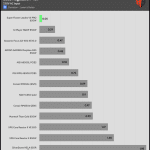

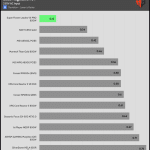
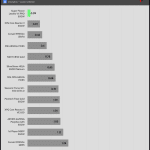
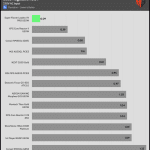
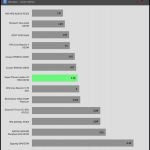

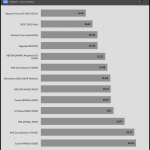
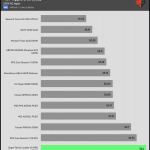

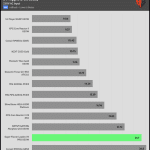
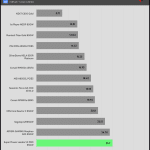
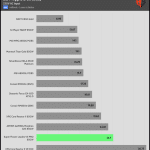
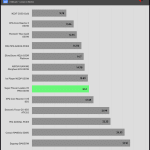
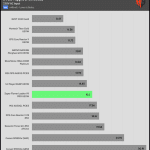


Hello.
Thank you for your work.
I hesitate between the LEADEX VII XG 850W, the LEADEX VII XG 1000W, the LEADEX VII PRO 850W and the LEADEX VII PRO 1000W.
Main criteria: silence +++ and reliability (and especially no coil whine).
Thank you.
LEADEX VII PRO 1000W is basically the XP because of the higher efficiency. I would go for this one
Thanks for your answer.
This Leadex PSU is really lacking in the ripple suppression department. It was at the bottom of the leaderboards. Power quality should take precedence over efficiency these days Especially since 80+ Gold is almost as good as it gets and the days of yore where a psu was 50% or less efficient are long gone.
check the cybenetics noise ratings to find the quietest of all. Performance wise they are close all of them.
May I please ask, why is there no review of the Leadex VII XG 850w? It’s highly recommended but I can’t find the review.
Thanks again for the wonderful work.
Do you think Super Flower Leadex VII Pro 850W is still a great option despite high In-rush current?
Other options I have are Deepcool PX850G, Corsair RM850e and XPG Core reactor II.
So what do you recommend ?
Yes it is a good option, because you won’t be able to drain that easily its bulk cap in normal conditions.
Full bridge: 4x main FETs
Hald bridge: 2x main FETs
I would leave it on the fan working mode, and let the fan adjust its temperature based on the thermal load.
Regarding the high inrush current
will the high inrush current damage both the PSU and external voltage stabilizer in the long run? I currently use this PSU alongside a 1000 VA stabilizer.
everything is affected, but note, high inrush currents exist ONLY if the bulk cap is completely drained, something not that easy.
I’m not really familiar with electricity,
does turning the PC off for days completely drain off the bulk capacitor?
Also, will you still rate leadex vii pro as good as leadex vii XG?
I was going to buy leadex vii XG since you rated it as the best overall performance, but it was out of stock in my country, so I bought the leadex vii pro
Usually not. The bulk cap usually keeps a charge unless the PSU is off for a significant period, week, or even months. The XG seems to have slightly higher performance but you won’t notice it. You made a very good choice to buy the Pro, no worries.
Hello, please tell me, why this power supply has such a high inrush current, when other power supplies with a similar capacitor and the same SCK-0512 thermistor have a much lower current? How can this be?
I have a RM1000X 2021 hooked up to a APC SRV1KI, whenever there is a power outage and I turn the computer on after an hour or so the UPS sometimes generate an Error in the logs its always inrush detected, thanks to you I know now its that Bulk cap in my supply. Now when ever there is an outage I just turn the UPS ON then leave for a bit then comeback after sometime and turn the PC on less to no errors that way. I guess the cap charges in that time frame.
Is the only difference between this line and the XG line 3.0 vs 3.1 compatability?
they have hardware differences.
Hello, are these manufacturing differences for better or worse? in my country the leadex XG 850 and the leadex XP Pro 850 cost the same, after reviewing both and seeing the problems with the Pro, which one would you choose? Do you plan to review the leadex vii xp 1200 Pro?
The XP model. This 1200W model if they send it yes.
Based on your experience, in these models that come with fans with ECO or hybrid mode, do you recommend always using the fan on or having it work automatically based on temperature?
Hello, could there be an error in the characteristics? What is the correct full-bridge or hall-bridge topology?
thank you and greetings